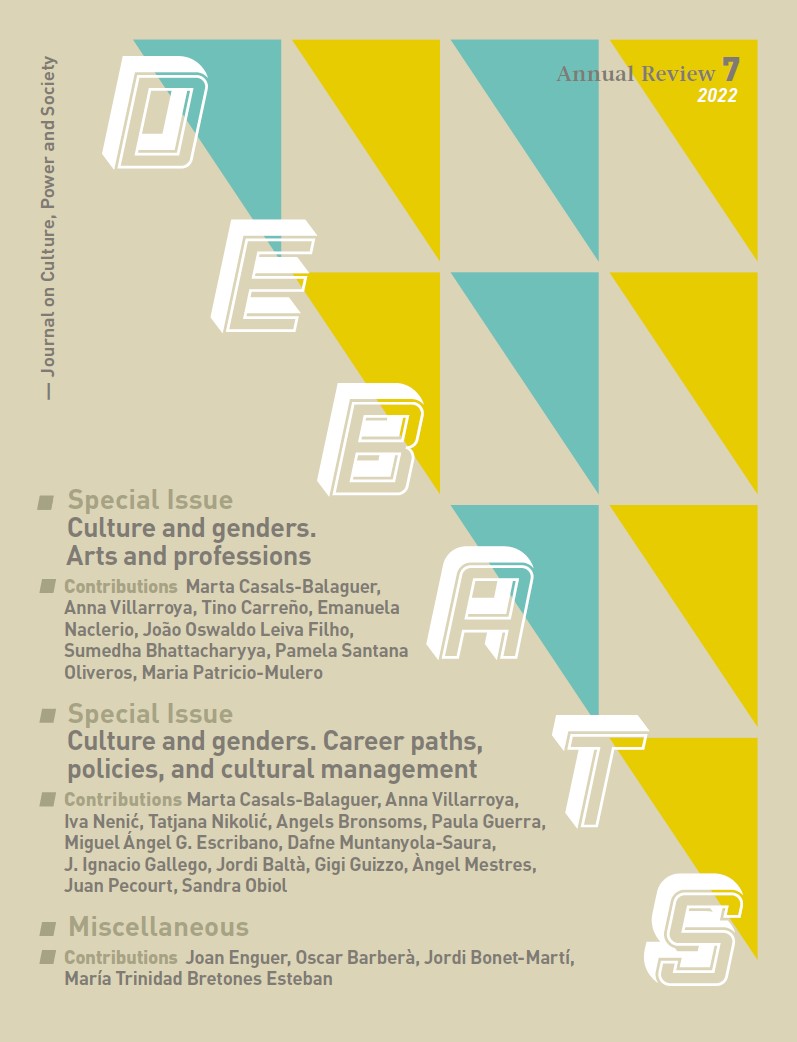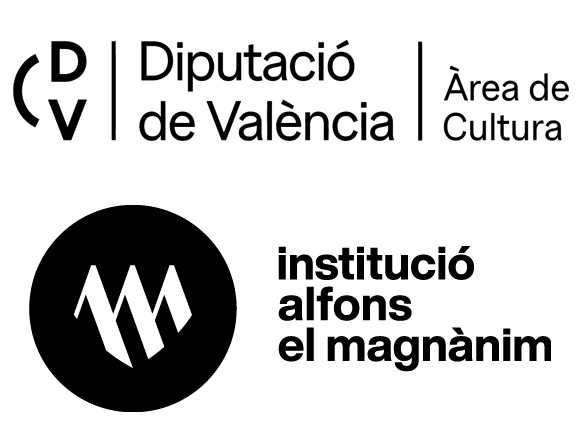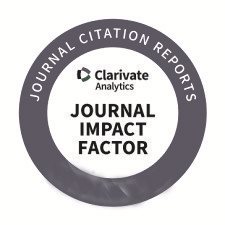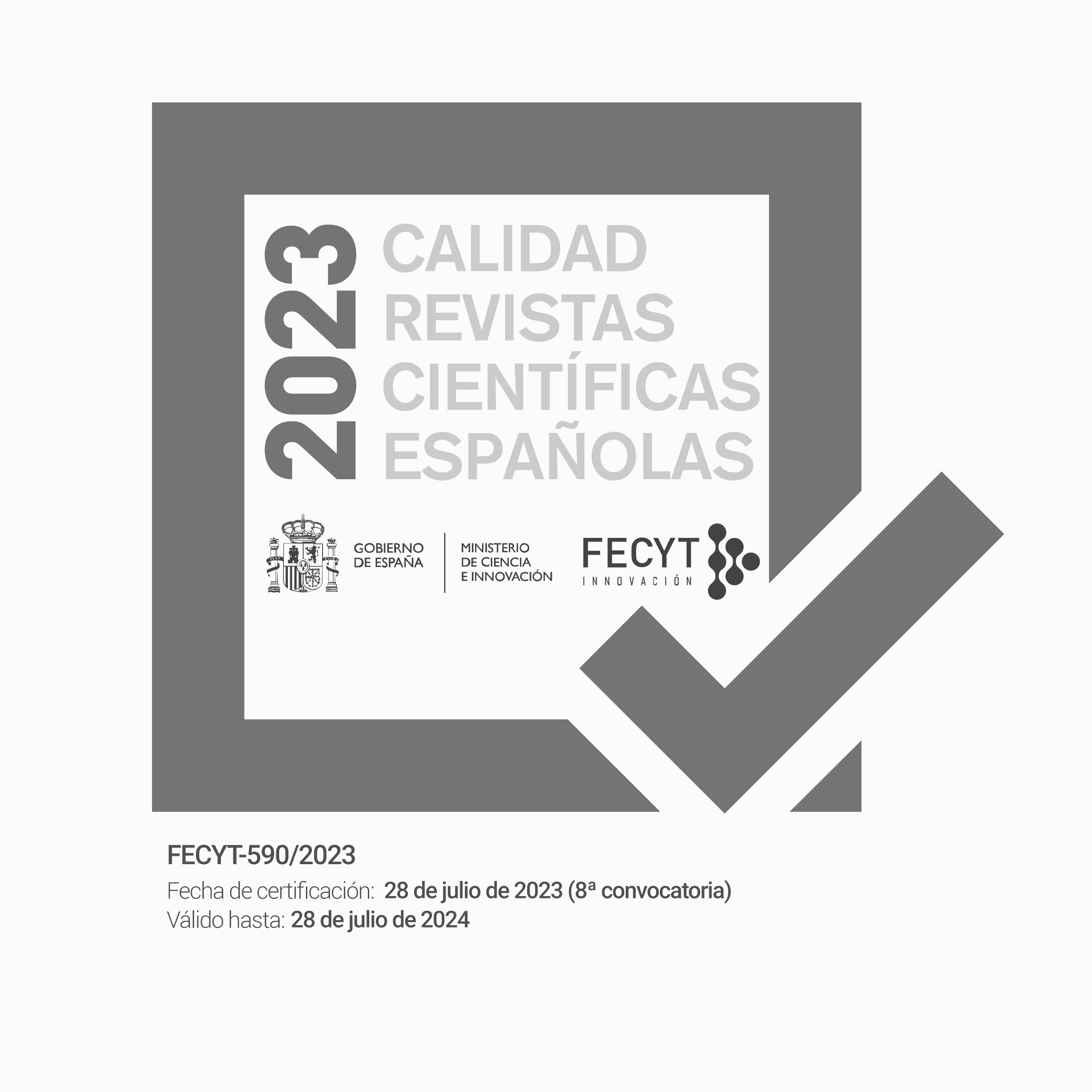The place of women in the theatres of São Paulo: from writing to performing
Palabras clave:
Gender inequality, economy of culture, performing arts, creative workforceResumen
The aim of this article was to provide quantitative information about the gender gap in theatre production in the city of São Paulo (Brazil), thereby helping to raise awareness of the inequalities faced by women in the field. The text compares the opportunities available to men and women working in seven different theatre-related occupations and is underpinned by a mapping of 1,466 plays performed in the city throughout 2018. The data were collected from three weekly guides published by the local media and two monthly publications: a theatre guide and a magazine from a cultural institution that ran 20 cultural venues in the city. Any gaps were then filled by directly contacting theatre venues and the producers of the plays. There was a significant imbalance towards men in the two most strategic theatre production jobs: men wrote 77% of the plays and directed 78% of them. Thus, male professionals were a huge majority precisely in the functions responsible for building the discourse that reaches audiences. Compared to women, this left them in a much better position to express their values, ideas, and perspectives. This gap was smaller when considering performers, of which 46% were female. Women were also largely absent in technical occupations given that they were a minority among lighting directors and set designers. However, women represented the majority among costume designers. The most unexpected result was the parity among producers, with 52% being women. All the aforementioned gaps increased when the number of performances were considered. On average, women worked less in plays that provided more working time that were therefore, more likely to have higher salaries. This current study also showed that when women were responsible for writing, directing, or producing a play, the gender gap was reduced in all the other functions.
Descargas
Citas
Actis, W. (2016). Situación sociolaboral del colectivo del artistas y bailarines en España. Fundación AISGE.
https://www.colectivoioe.org/uploads/-7e34fefa80def311f6be4d767018885d56278068.pdf
Azevedo, A. L. M. dos S. (2020). IBGE - Educa | Jovens. IBGE Educa Jovens. Retrieved May 24, 2021, from
Azevedo, A. L. M. dos S. (2018). IBGE - Educa | Jovens. IBGE Educa Jovens. Retrieved May 17, 2021, from
das-mulheres-no-brasil.html
Bourdieu, P. (1979). La distinction: Critique sociale du jugement. Éditions de Minuit.
Cinquante ans de pratiques culturelles en France [CE-2020-2]. (n.d.). Retrieved May 24, 2021, from https://www.
culture.gouv.fr/Sites-thematiques/Etudes-et-statistiques/Publications/Collections-de-synthese/Cultureetudes-
-2021/Cinquante-ans-de-pratiques-culturelles-en-France-CE-2020-2
Colomer, J. (2016). Estudio sobre la situación de las artes escénicas en España. Academia de las Artes Escénicas de
España.
Conde, I. (2009). Artists as vulnerable workers [WorkingPaper]. CIES-ISCTE.
https://repositorio.iscte-iul.pt/handle/10071/1502
Coulangeon, P., Ravet, H., & Roharik, I. (2005). Gender differentiated effect of time in performing arts professions:
Musicians, actors and dancers in contemporary France. Poetics, 33(5), 369–387.
https://doi.org/10.1016/j.poetic.2005.09.005
Encuesta de hábitos y prácticas culturales. (n.d.). Retrieved May 24, 2021, from http://www.culturaydeporte.gob.es/
servicios-al-ciudadano/estadisticas/cultura/mc/ehc/portada.html
Estatísticas de gênero – Indicadores sociais das mulheres no Brasil (2ª Edição). (2021) Retrieved May 24, 2021, from
https://biblioteca.ibge.gov.br/visualizacao/livros/liv101784_informativo.pdf
Fomento ao teatro: 12 anos (1a. edição). (2014). Secretaria Municipal de Cultura.
Indicadores estadísticos culturales vinculados a las artes escénicas y musicales y desgloses por sexo. (2021). Retrieved
May 24, 2021, from https://www.culturaydeporte.gob.es/dam/jcr:1feaebe0-1303-4c9f-af12-f71e383cf2c3/
datos-estadisticos-artes-escenicas.pdf
JLeiva Cultura & Esporte (2019). A força do teatro na cidade de São Paulo. Retrieved May 24, 2021, from
https://www.jleiva.co/pesquisas.
Menger, P.-M. (1999). Artistic Labor Markets and Careers. Annual Review of Sociology, 25, 541–574. JSTOR.
http://www.jstor.org/stable/223516
Museus em Números – Instituto Brasileiro de Museus – Ibram. (2013). Retrieved May 24, 2021, from
https://www.museus.gov.br/museus-em-numeros-volume-1/
Observatório Brasileiro do Cinema e do Audiovisual | Agência Nacional do Cinema—ANCINE. (n.d.). Retrieved May
, 2021, from https://oca.ancine.gov.br/
OFF Guia de Teatro. (n.d.). Retrieved May 24, 2021, from http://www.guiaoff.com.br/
Participação Feminina na Produção Audiovisual Brasileira 2018 | Observatório Brasileiro do Cinema e do Audiovisual.
(n.d.). Retrieved May 24, 2021, from https://oca.ancine.gov.br/participa%C3%A7%C3%A3o-feminina-naprodu%
C3%A7%C3%A3o-audiovisual-brasileira-2018-0
Secretaria Especial da Cultura | Ministério do Turismo (2021). Sistema de Acesso às Leis de Incentivo à Cultura. Retrieved
May 24, 2021, from http://sistemas.cultura.gov.br/comparar/salicnet/salicnet.php
Souza e Silva, J. (2018). Diferentes gerações, diferentes práticas culturais. In J, Leiva & R, Meirelles (Eds.). Cultura
nas Capitais. Rio de Janeiro, RJ: 17Street.
SP, © Sesc. (n.d.). Sesc SP. Retrieved May 24, 2021, from
https://www.sescsp.org.br/online/revistas/tag/5557_EM+CARTAZ
Sphinx Theatre | New Women in Theatre Forum Report. (2020). Retrieved May 24, 2021, from
https://sphinxtheatre.co.uk/new-women-in-theatre-forum-report/
Women in theatre: How the “2:1 problem” breaks down | News | theguardian.com. (2012). Retrieved May 24, 2021,
from https://www.theguardian.com/news/datablog/2012/dec/10/women-in-theatre-research-full-results
Descargas
Publicado
Cómo citar
Número
Sección
Licencia
Sin perjuicio de lo dispuesto en el artículo 52 de la Ley 22/1987 de 11 de noviembre de Propiedad Intelectual, BOE del 17 de noviembre de 1987, y conforme al mismo, los autores o autoras ceden a título gratuito sus derechos de edición, publicación, distribución y venta sobre el artículo, para que sea publicado en Debats. Revista de cultura, poder y sociedad.
Debats. Revista de cultura, poder y sociedad se publica bajo el sistema de licencias Creative Commons según la modalidad «Reconocimiento - NoComercial (by-nc): Se permite la generación de obras derivadas siempre que no se haga un uso comercial. Tampoco se puede utilizar la obra original con finalidades comerciales».
Así, cuando el autor o autora envía su colaboración, acepta explícitamente esta cesión de derechos de edición y de publicación. Igualmente autoriza a Debats. Revista de cultura, poder y sociedad, la inclusión de su trabajo en un fascículo de la revista para que se pueda distribuir y vender.











